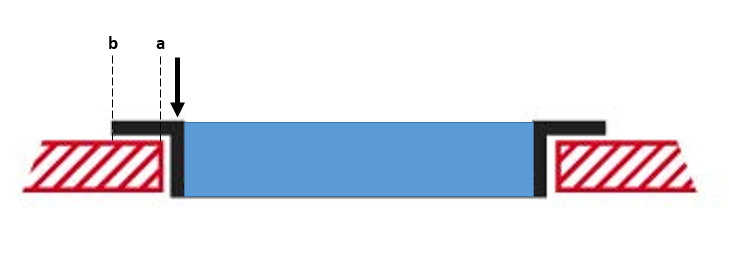merba661
Structural
- Aug 18, 2016
- 1

I have a situation basically like this picture. It is essentially a vent installed into an opening with a flange around the perimeter that bears on the surrounding of the opening - nothing else holding it in placce. A pressure on the face results in a distributed load on the perimeter which I represented on the picture with the black arrow. It is pretty much constrained from moving horizontally except for a small gap around the perimter between the frame and the opening. So my question is, when it comes to checking the bending of that flange, what would one use as the dimension of the moment arm? The distance from the black arrow to 'a' or the black arrow to 'b'?


![[idea] [idea] [idea]](/data/assets/smilies/idea.gif)
![[r2d2] [r2d2] [r2d2]](/data/assets/smilies/r2d2.gif)